Links:
As its most westerly and ice-free harbour, Liepaja (or Libau) was already of crucial importance to Czarist Russia. The late 19th - early 20th century Navy Base (Kara Osta on the map) with its characteristic red brick buildings was already in use as a submarine port before W.W.I.
In the final phase of W.W.II it was the target of especially heavy fighting.
During the Soviet Era it was again used as a Navy and more specifically Submarine base. Concrete apartment blocks were built, but the fall of the Soviet Union and Latvian independence left many unfinished. The departure of military personnel to Russia and abandonment of many other (half-finished-) apartments added to the desolation.
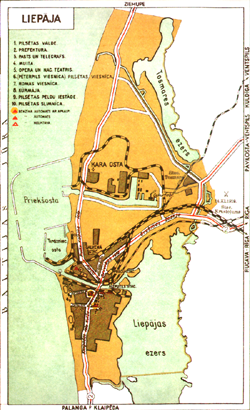
The outer harbor. The wooden ships wrecks in the foreground may have been laying there for more than half a century.
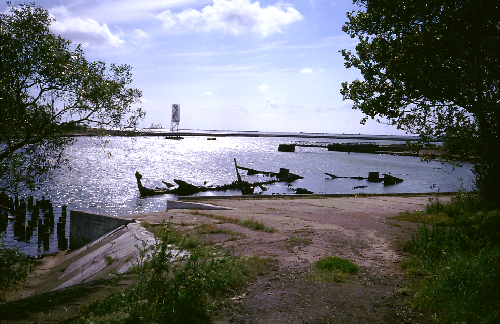
The row of massive concrete bunkers along the northern beach.

Many of the better preserved multi-storeyed units still have their gun pivots.
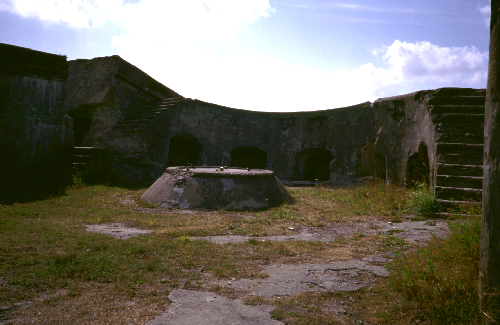
Not just the ravages of war, but above all the constant battering of the waves slowly demolishes the heavy concrete.
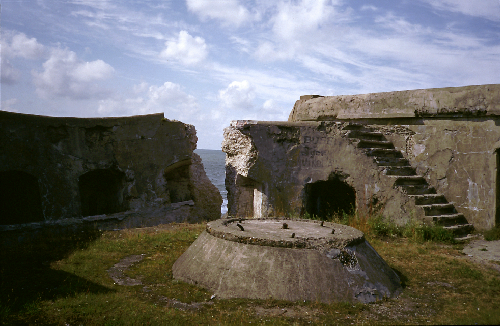
A view through the upper corridor connecting the individual units.
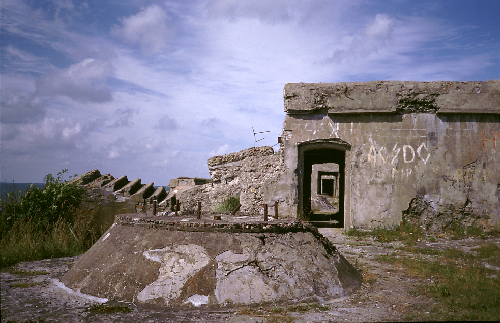
A number of shipwrecks can be seen among the rubble.
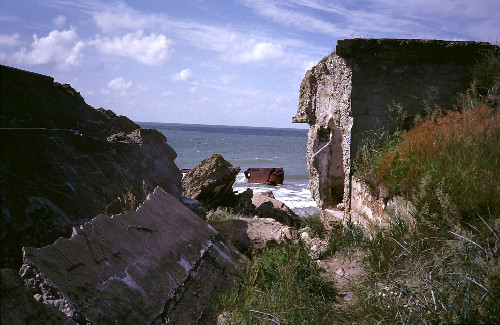
In the distance, across the shallow sandy bay, one can see ships passing the mole at the harbor entrance.
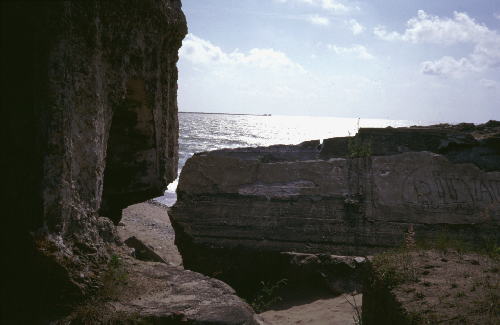
Looking south toward the harbor. The once massive line of casemates is slowly being reduced to rubble.
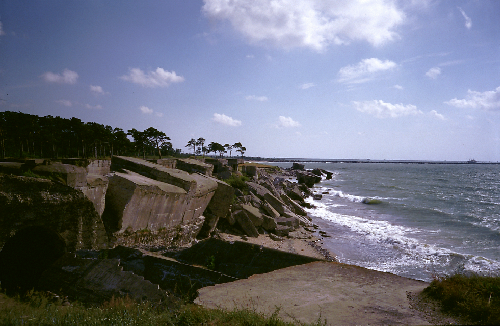
The old watertower, standing as a lone beacon in the wasteland that once was the Imperial Navy Base.

Some of the ruins are still impressive.
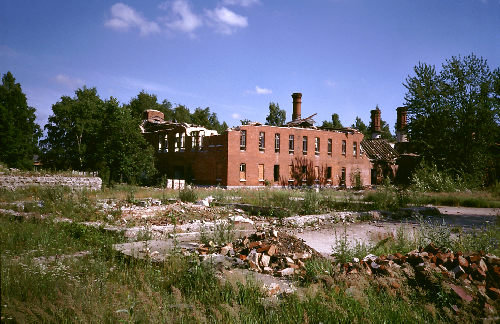
Although a few of the old barracks are still inhabited, most of the streets are left to decay -- but not just by the forces of nature.
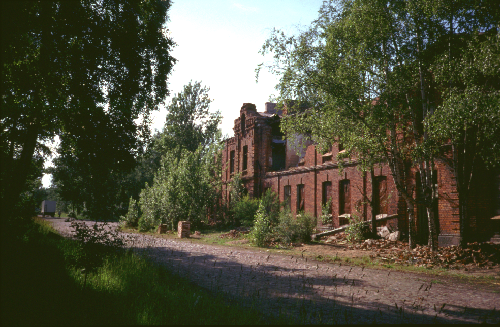
Brick poaching is a large industry here. Reusable building material is carried away literally by the truckfull.
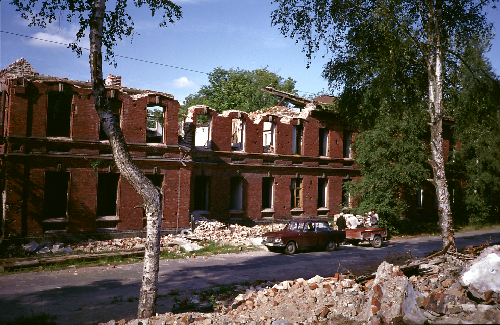
The portal of the old riding school, the Cyrillic "Manezh‘" still legible above the entrance. At the current rate, it will take only a few years before nothing will be left.
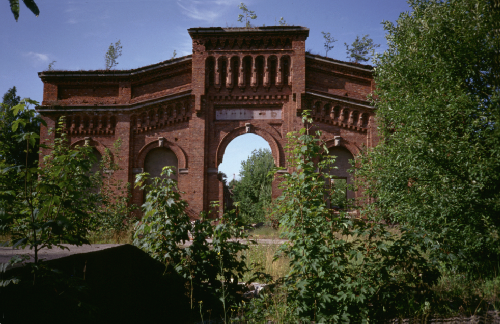
| Back | Home | © Joost Lemmens 2001 |
|